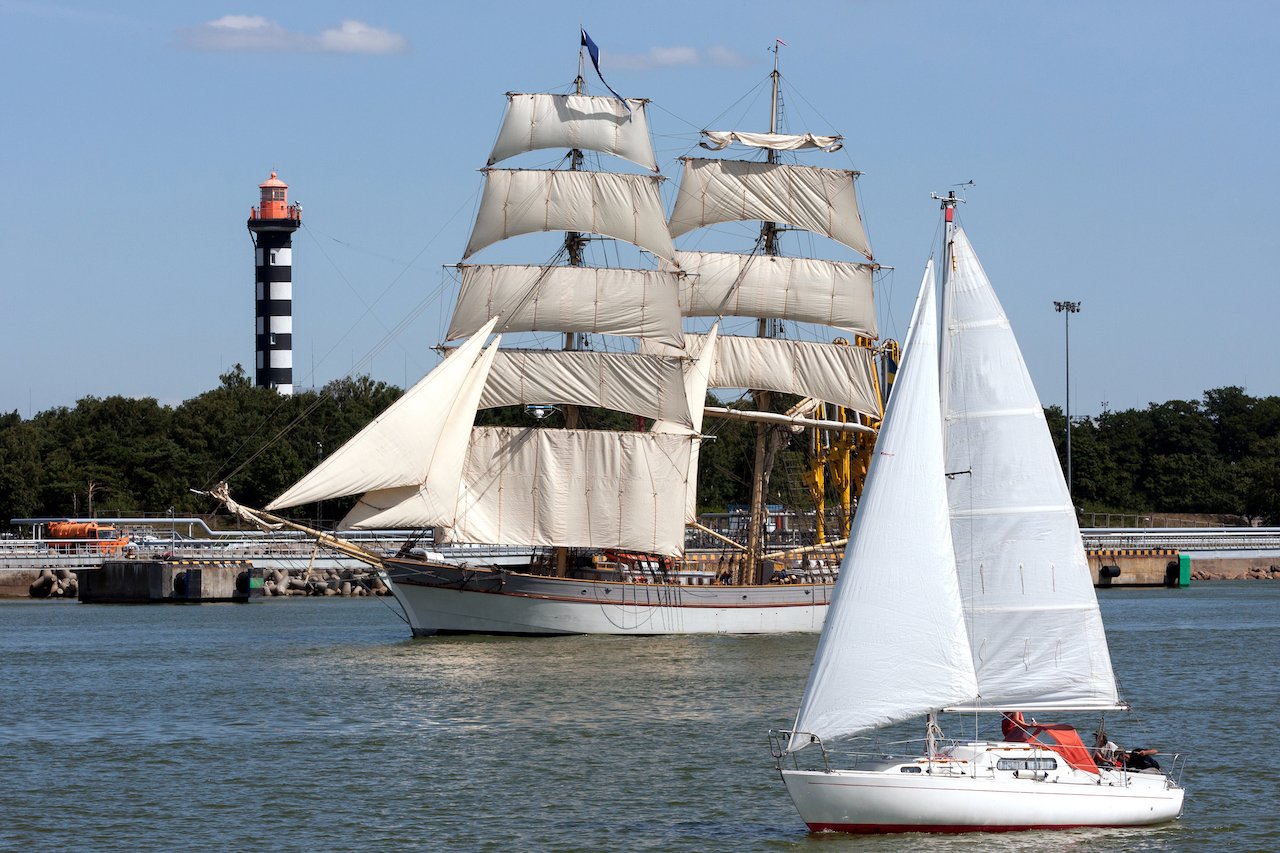Whether we are seeking relaxation, exhilaration, or both, we feel exhilarated when we harness the power of the wind to carry us across the water. Over time, certain types of sailboats have emerged as favorites for cruising, racing, and other specialized applications. Sailboats differ not only in the kinds of mast configurations and sails they use, but also in their hull and keel designs. Here's a look at the variety of sailboats plying the waves today.
Mast and Sail Configurations:
Sloop
With that classic sailboat shape that sports a single mast with a fore-and-aft rig, the sloop is immediately recognizable. It's also the most popular type of small or mid-sized sailboat of the modern era. As recreational sailing gains popularity and smaller crews head out on the water, a sloop allows maximum maneuverability upwind and overall control when sailing in a smaller boat. For a faster ride, racing sloops add some extra sail to the same general rigging layout.
Cutter
A favorite vessel for cruising, like the sloop, the cutter is a single-masted sailboat. The main difference is that the mast is set farther aft, allowing room for two headsails from two forestays. Cutters are valued for their easily managed range of possible sail positions, making the craft maneuverable under challenging winds.
Cat Rig
The last of our single-masted sailboats, the cat rig has a single sail, which is set so well forward that it allows for considerably more cabin room than other types of sailboats of comparable size. These boats are simple to sail, economical, and attractive, but the sail configuration makes for a significant loss in upwind performance.
Ketch
A traditional choice for sailors ready to take on a larger cruising craft, the ketch is rigged similarly to a sloop, but with a second mast, called a mizzenmast, set aft. Each separate sail on a ketch is a bit smaller than what would be found on a sloop of similar size, allowing for more flexibility in sail usage, and making the vessel more comfortable to control, overall, especially in larger sailboats. Though the greater flexibility can come at an elevated cost to account for the extra sail, mast, and rigging, and though a ketch is considered a slower craft than a sloop, it offers a smooth cruising ride for the recreational sailor.
Yawl
Like a ketch, a yawl boasts two masts, a main and a mizzen, but in the yawl, the mizzen mast is smaller and set behind the rudder post. The debate between ketches and yawls rages on, with sailboat lovers in both camps expounding the virtues of their favorite. Many will concede that the mizzen on a yawl is not what it is on a ketch, especially for ease of handling. However, yawl purists will tell you that the aft sail provides a certain balance that makes for beautiful handling. Everyone agrees that a yawl, with its graceful and elegant craft design, undeniably appeals to the romantic sailor looking for that connection with the perfect vessel.
Schooner
A schooner is a sailing vessel with fore-and-aft sails on two or more masts, with the foremast designed to be a bit shorter than the main mast. Though the schooner has held an undeniable place in the history of sailing, this style of craft has largely been replaced by sloops and yawls, which are better upwind and easier to manage. Still, schooners are hearty, powerful, and stately, and they were once the fastest ships in the seas.
Hull and Keel Designs
Hulls come in three basic configurations: monohull, catamaran, and trimaran. Monohull boats are the traditional sailboat design. These single-hulled vessels rely on ballast for stability. Though a monohull sailboat has that clean and classic sailboat look that many enjoy, both the dual-hulled catamarans and the tri-hulled trimarans are more stable than monohull crafts since they derive their stability from the distance between the hulls.
Keels also come in a variety of designs, but no matter what they look like, they are all designed to help keep a boat from slipping sideways in the water. The most typical is a full-length keel, which relies on its length, rather than its depth, to provide lift and balance to the hull. Fin keels are separate from the rudder and will run deeper into the water since they don't run the full length of the hull. A wing or bulb keel has more righting ability, for use in high-performance sailboats, while a bilge keel will reduce keel performance, but it will allow a boat to stand on mud or sand at low tide. Finally, a centerboard or daggerboard can be raised or lowered by the crew. When lifted, it reduces drag, but when dropped, it will provide the same benefits as a keel.
Ready to set sail on your next adventure? Contact us to learn more. We'll help you explore your options and find the best vessel to suit your sailing needs.






